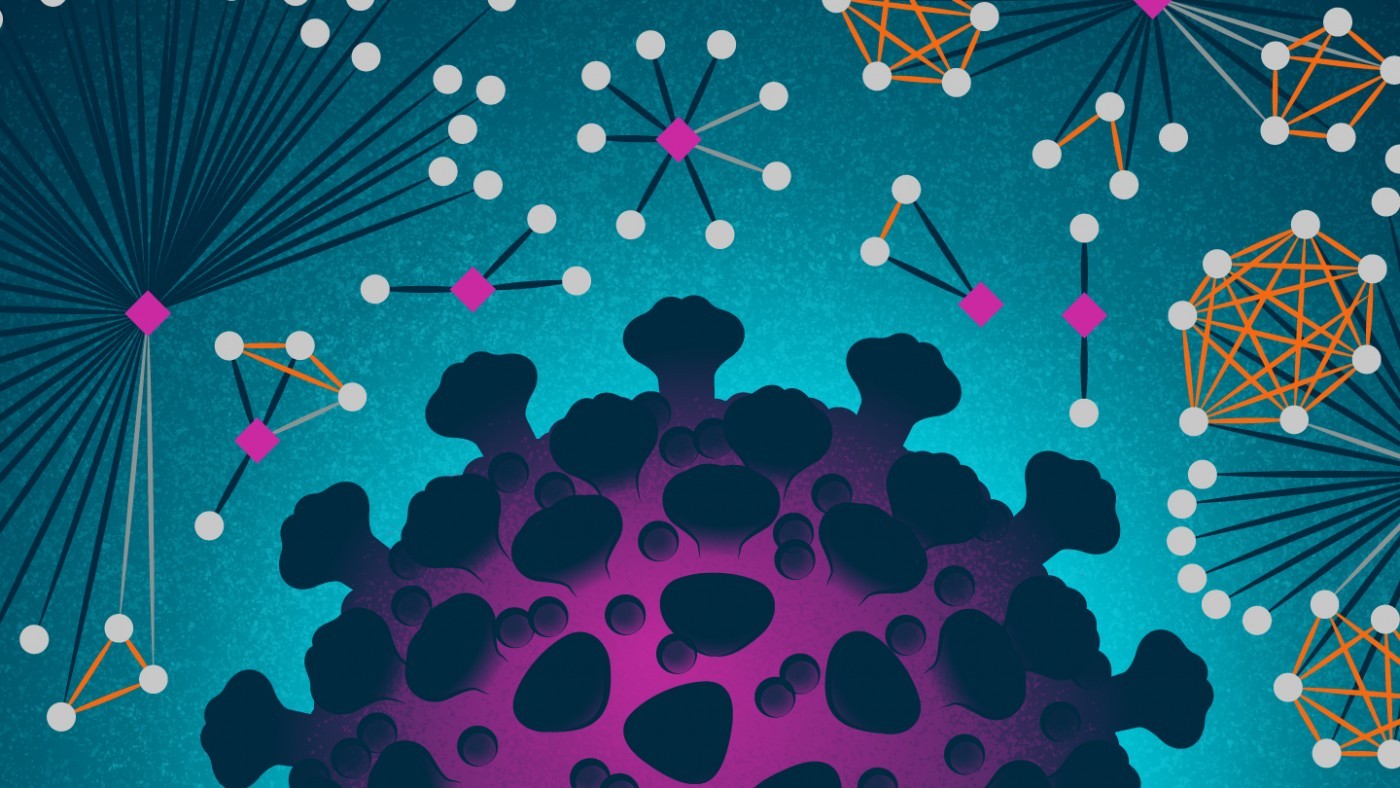Gladstone NOW: The Campaign Join Us on the Journey✕

Senior Investigator Warner C. Greene, MD, PhD, wants to find COVID-19 treatments among the drugs already approved by the FDA, which would speed their use in the current pandemic.
A critical part of confronting COVID-19 is identifying effective drugs to both prevent infections and care for patients. As COVID-19 is a novel type of coronavirus, little is known about its molecular makeup and the types of drugs that could combat it. Yet it also shares some features with other viruses that attack human cells—starting with the need to enter the cells. Gladstone has the unique opportunity to take research previously conducted on HIV and apply it to this new virus.
In the early 2000s, Senior Investigator Warner Greene, MD, PhD, and his lab developed a virion-based assay—an assay that uses live virus—to study how HIV fuses with human cells.
“What this virion-based assay allowed us to do was look at HIV through a clear lens to study how HIV enters cells and potentially to find inhibitors of this initial step in the viral life cycle,” Greene explains. “Applying it to the study of SARS-CoV-2, the virus that causes COVID-19, would have the same effect.”
Since the virion-based assay is not disease specific, the Spike protein of SARS-CoV-2 could be used to coat the HIV virions allowing us to study how SARS-CoV-2 binds to and enters cells. This assay has the potential to be used in high-throughput screening assays where all of the FDA-approved drugs are screened.
“By focusing on already approved treatments for other conditions, the lengthy waiting time for drug approval is cut significantly.”
Greene notes, “We would have to be really lucky to find a single drug with high activity, but we might well find a few moderately active drugs that might synergize when combined. Also, because these agents interfere with a fundamental first step in the virus’s life cycle, it is not out of the question that active agents could be used as preventives in high-risk populations. It would be particularly exciting to identify agents or combinations of agents that not only blocked SARS-CoV-2 but also other coronaviruses like SARS-CoV-1 and MERS.”
This assay can also be used to test for antibodies that block the binding of SARS-CoV-2 to its receptor or that block its subsequent fusion into cells. One practical use of the assay would be to test convalescent plasma samples donated by people recovered from COVID-19 for how effectively that blocked SARS-CoV-2 entry into cells.
Senior Investigator Nevan Krogan, PhD, is also interested in identifying FDA-approved drugs that interfere with the virus. Using a different assay from Greene’s, he and a large team of collaborators have identified 332 human proteins that partner with coronavirus proteins and may help infection. Among those are many proteins that are known targets of FDA-approved drugs. Now the team is screening these drugs to see whether they prevent the virus from infecting cells in the lab.
“By focusing on already approved treatments for other conditions, the lengthy waiting time for drug approval is cut significantly,” says Krogan. Without the long and intensive drug approval process, treatment can get to patients faster.
Finding an effective treatment and implementing it in the course of a few weeks or months would also help ease the burden on current public health measures like shelter-in-place, quarantines, and bans on in-person gatherings.
“The goal is to end the spread, and current public measures are really a way of preventing our health systems from overloading,” says Greene, “Finding treatments, especially ones that stop the virus before it can attack human cells, will ultimately end the spread.”
Support Our COVID-19 Research Efforts
Gladstone scientists are moving quickly to respond to the coronavirus outbreak. Help us end this pandemic.
Science in Seconds | Researchers Pinpoint Key Gene Behind Heart Defects in Down Syndrome
Science in Seconds | Researchers Pinpoint Key Gene Behind Heart Defects in Down Syndrome
In this video, Gladstone scientists share how they used stem cells, gene editing, and AI to identify a gene driving heart defects in Down syndrome—and how reducing its levels in mice restored normal heart development, offering hope for future treatments
Gladstone Experts Cardiovascular Disease Data Science and Biotechnology Pollard Lab Srivastava Lab AI Big Data CRISPR/Gene Editing Human Genetics Stem Cells/iPSCsScience in Seconds | The Thinking Microscope: Research Powered by an AI Brain
Science in Seconds | The Thinking Microscope: Research Powered by an AI Brain
In this video, Steve Finkbeiner and Jeremy Linsley showcase Gladstone’s groundbreaking “thinking microscope”—an AI-powered system that can design, conduct, and analyze experiments autonomously to uncover new insights into diseases like Alzheimer’s, Parkinson’s, and ALS.
Gladstone Experts ALS Alzheimer’s Disease Parkinson’s Disease Neurological Disease Finkbeiner Lab AI Big DataVisualizing Stem Cell Technology: An Animated Explainer
Visualizing Stem Cell Technology: An Animated Explainer
In this animated short, Deepak Srivastava explains how scientists can reprogram ordinary skin or blood cells back in time—turning them into induced pluripotent stem cells which are capable of becoming any cell type in the body.
Gladstone Experts Stem Cells/iPSCs



